This is the 25th in a series of posts on the Fujifilm GFX-50S. The series starts here.
The Fuji GFX-50S has an all-electronic shutter mode. When running silent, the mechanical shutter is on vacation, lying back and catching Z’s while the sensor does all the work. The mechanical shutter is a rabbit, completing an exposure in a few milliseconds (for shutter speeds faster than that, a slit moves across the sensor. The fully electronic shutter is a tortoise, taking longer to do its job.
How much longer? Stay tuned.
I set up an analog oscilloscope with an input from a function generator. If you’re going to try this at home, don’t try it with a digital scope; it won’t work. I set the time base to 1 msec/division, and the amplitude of the generator to just over the maximum excursion for the scope’s vertical sensitivity. I mounted a Fuji 120 mm f/4 native macro lens on the GFX. I put the RRS plate on the camera and clipped it into a Gitzo tripod. I set the camera for electronic first curtain shutter. I set the camera to manual exposure, and the shutter speed to 1/1000 second – that’s one msec. I stopped down a bit and cranked up the ISO to 1600.
I took a picture:
You can see that the trace is about one division wide. One division is 1 msec, and we set the shutter to 1 msec. Isn’t it nice how that worked out? Now notice that the bright part of the image is not vertically oriented, as it would be if every part of the image was exposed in the same 1/1000 second. It’s diagonal. Since scope traces from left to right, the fact that the top of the diagonal is left of the bottom means that the shutter exposed the top of the image before it exposed the bottom. Since the image is upside down on the sensor, that means that the GFX mechanical shutter must move from the bottom of the camera to the top.
Also note that the lines are slightly curved, indicating that the trailing curtain increases its speed as it moves across the image plane, and the electronic leading curtain performs an approximation of that behavior, even though its inertia is presumably zero.
We can also look at the picture and tell how long the shutter took to go from the bottom of the camera to the top. I’ll put in a construction line to help with that:
We can see that it takes the shutter about four and a half divisions to go from the bottom of the camera to the top. That’s 4.5 msec, and the synch speed is 1/125 second, or 8 msec. Looks like the Fuji engineers put a a fair amount of wiggle room in there.
Now, if we switch to all electronic shutter mode, we can see that the shutter is quite a bit slower:
In fact, it’s so much slower that we can’t measure it from that picture. But if we slow the time base down to 50 milliseconds per division, it looks possible:
I’ll add the construction lines differently so the trace isn’t obscured, it being so narrow now:
Now you can see that the shutter takes about 5 divisions, or 250 msec, or 1/4 second to get its job done.
This is the slowest electronic shutter I’ve measured, by a lot. The runner up is the Sony a7RII at 1/14 second.
How does that compare with other cameras quantitatively?
I figure rows/sec is interesting if they all have column ADCs. It is possible that the GFX is running its ADCs much slower than the other cameras, which all seem to be reading out roughly the same number of rows/sec. All the Sony cameras drop down to 12-bit precision in all-electronic shutter mode. The GFX is 14-bits.
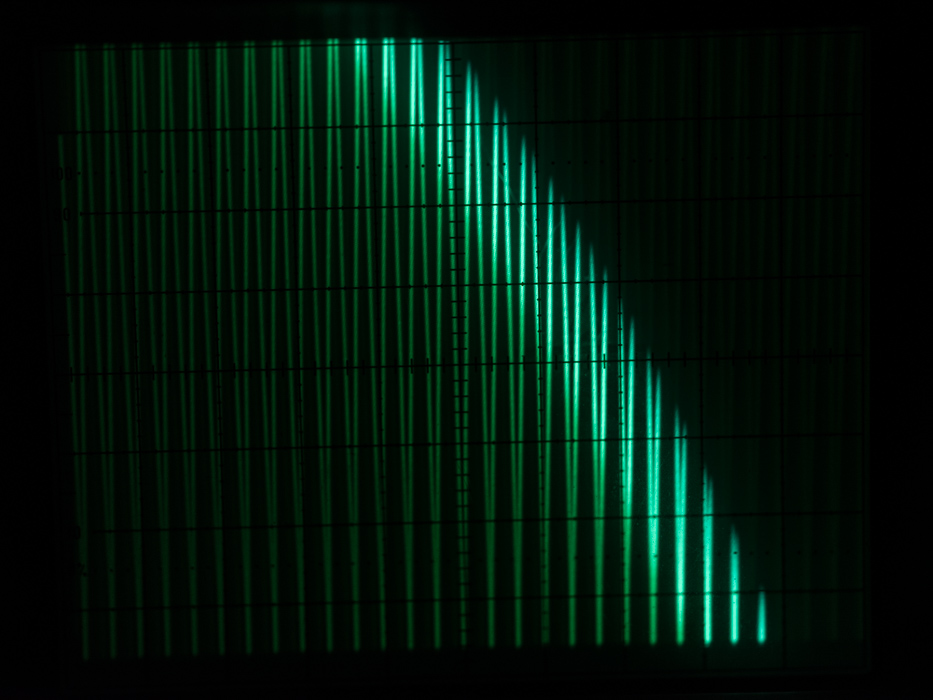
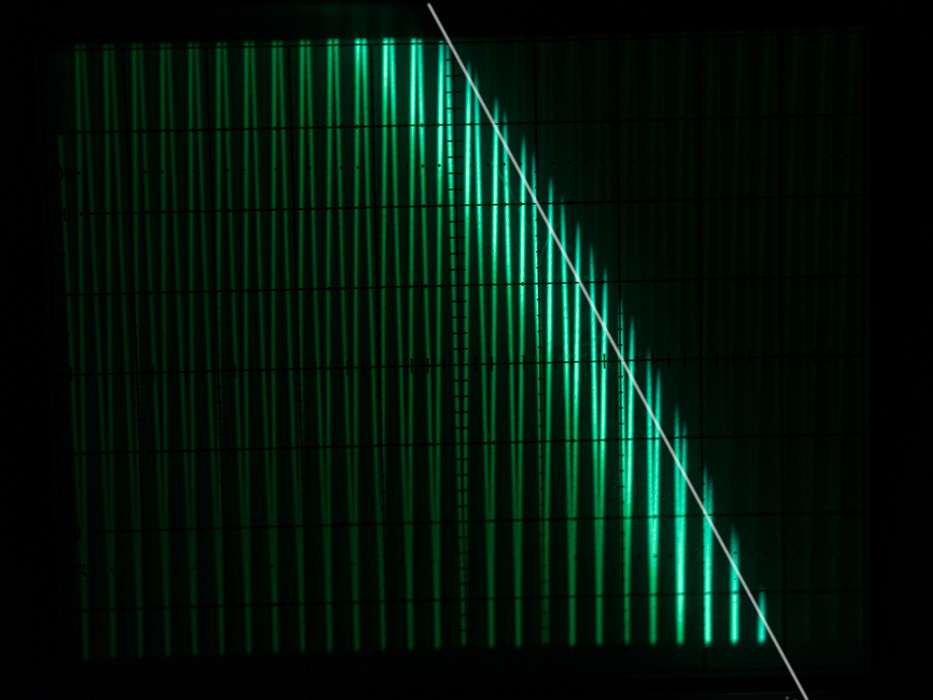
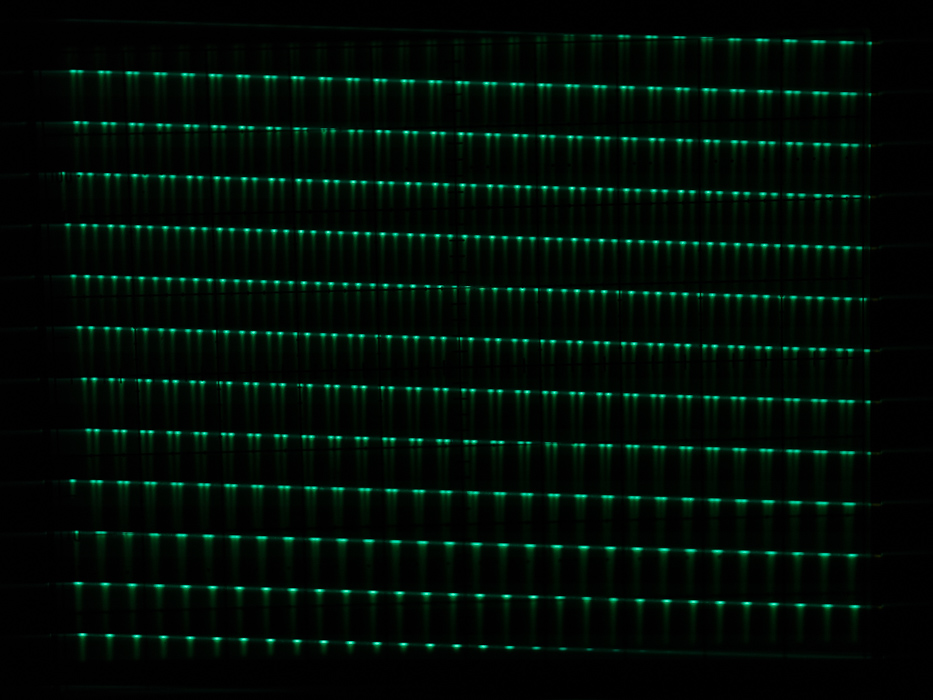
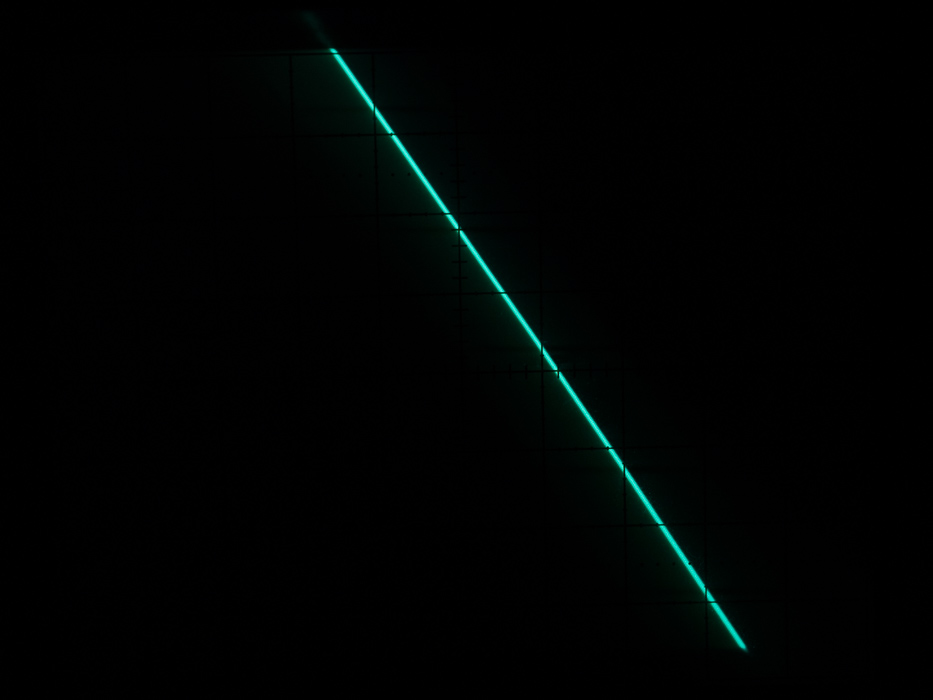
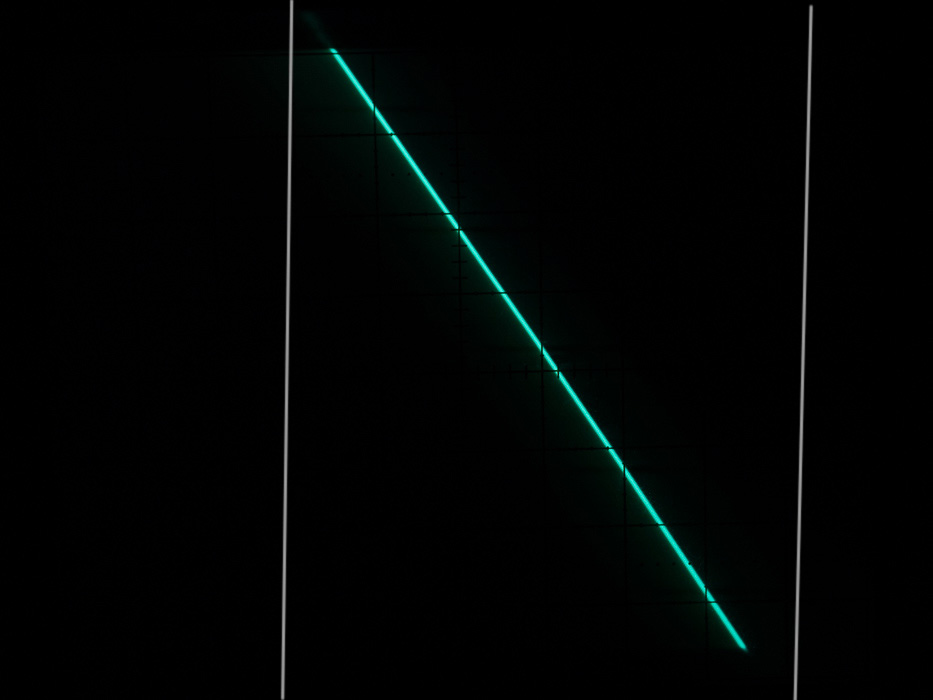
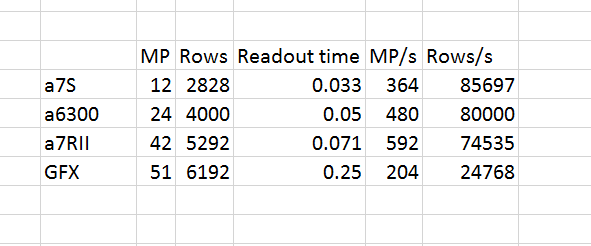
Jim, fine !
The use of 14bit sampling explains the low speed as ramp-comparator ADCs operate 4X more comparisons in 14bit resolution vs 12bit.
If the chain is .. pixel_readout + interval + 4X coparisons .. then the 3X slower row_readout looks perfectly reasonable 😉
I agree completely with that. I am told — but haven’t measured — that the P1 100 MP back takes over a second to read out in all electronic shutter mode.
Wonder where the Phase IQ3100 ES comes in versus other ES?
Rumor is about a second. I’d love to test one.
I’ve heard there is an IQ penalty when it comes to using ES on the A7rii. Is this the drop to a 12bit read out that is mentioned or is it something else? Also is there a IQ drop with the Fuji in ES mode?
The a7RII does drop to 12 bit precision in SS mode. Whether this has any effect on IQ depends on the ISO setting. There is no such loss with the GFX.